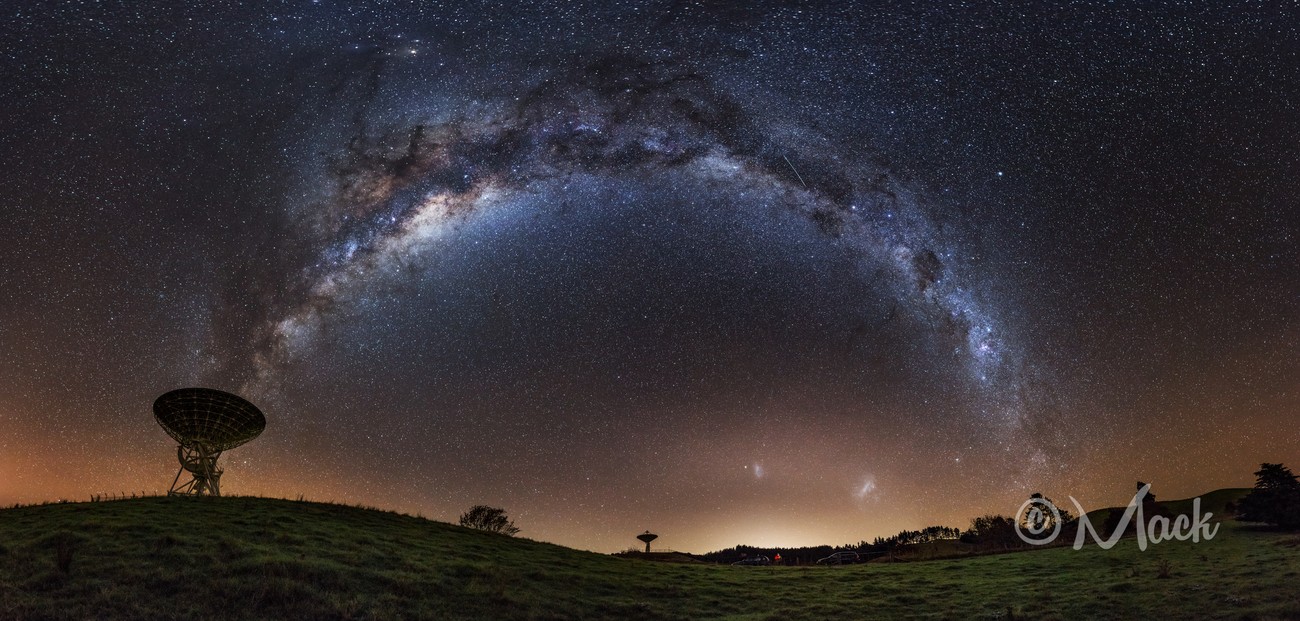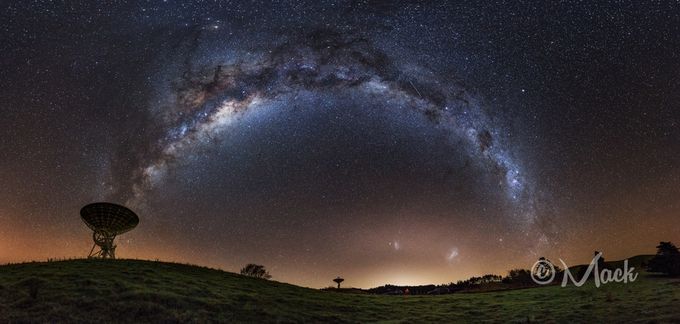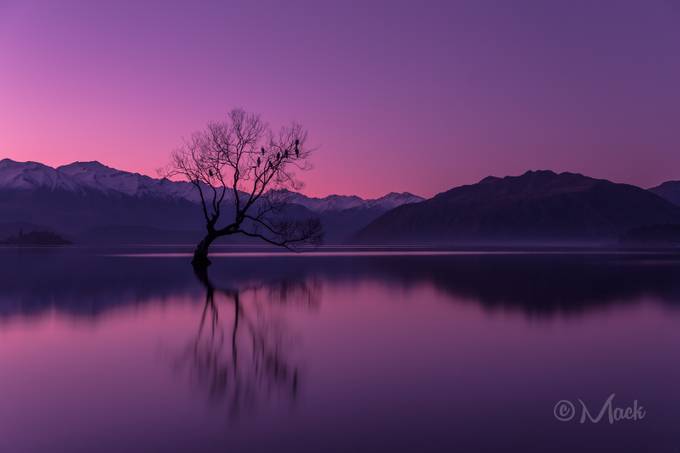Experience the never ending magical nature shots of ViewBug community member and New Zealand photographer Mikeymackinven.
What inspired you to be a photographer?
I have always wanted to learn how to use an SLR camera, but didn’t really get around to it until somewhat later in life.
What was your first camera and what do you shoot with today?
I got my first DSLR as a birthday present back in 2012 from my wife; a Canon 600D with the twin lens kit. I still use it today as my backup camera. I also use a Canon 6D, which is a monster in terms of light collecting.
When someone looks at your photos, what do you want them to take away from it?
I want them to see what I see, but better. The scenes I capture are quite vast, but in the scheme of things, so is our world, solar system and the Milky Way. I want people to know what is out there, and encourage them to see and capture it for themselves. I get a lot of comments like ‘does that really exist?’ and ‘that can’t be real’ etc. All you need to do is look up once in a while and see that yes, it does exist.
How do you describe your style?
That is an interesting question? I feel that I have found quite a distinctive style - full of contrast, vibrant, but not over saturated. I like to keep the natural look of our night skies, with a bit of enhancement, but without overcooking it. Sometimes I will delve deeper and see what I can pull from an image, and sometimes those results work very well on an artistic level. My images are by no means scientific, but render what I think should be seen. Auroras, airglow, galaxies, etc… they are all there and should be celebrated in their glory.
If you had to choose one lens which one would it be and why?
Samyang 24mm ƒ1.4. To me this lens is the ‘Milky Way God’. The sharpness, fastness, easiness of this lens is just great, and for the price? It’s a no-brainer. You don’t need autofocus for this kind of photography, and being ƒ1.4 you can have a lot of fun with fascinating effects. However I never shoot my Milky Way images wide open, always stopped down a bit for extra sharpness and details.
What are your 3 tips for others who want to become photographers?
1. Start easy. Get a kit that is cost effective, and replaceable in the long run. Get out there and use it to learn the functions, and find a niche that you want to learn more about like long exposure photography. Focus on that until you nail it – that is how I learned.
2. Take risks. Sometimes you just need to go that extra step, get wet or look over the edge to get the shot. My best images came from an element of risk, and I look back now and go - yes, I could have lost all my gear but it was totally worth it.
3. Learn slowly. I recommend learning one thing at a time, and try to learn that well – rather than taking on more than you can chew. Once you have mastered that one thing, move onto something bigger, by using that one thing. If it’s starscapes that you want to learn, then learn how to get your favourite settings right, and learn how to edit it to your style. Then move on to bigger images, like multiple image stitching, stacking, composites etc.
Where did you learn to take photos?
I learnt in front of the Auckland cityscape. I had seen many beautiful shots of Auckland City at night, and wanted to capture my own version. I spent countless nights learning what exposure times do to the water. What an aperture setting does to the city lights and overall sharpness. And what high ISO can do to ruin a good cityscape shot. I started in TV mode and the results were cool. Then learnt what the settings were in TV mode, and tried it in Manual mode. That is where the true experimentation came from.
After a while I saw stars in my cityscapes, which led to more research about night photography. I googled Starscapes and Milky Way photos, and came across the work of Mark Gee and Rob Dickinson. I found their work absolutely amazing, and that led me to trying out my first Milky Way shot – though it didn’t even have the Milky Way or many stars in it, and I was gutted! So I went off to do more research about settings, I had to re-learn how to shoot night photography. Gone were the days of shooting ƒ16 and 100 ISO; welcome to the world of wide aperture and high ISOs. I had my 600D, EF-S 10-22mm lens and a cheap tripod. Every clear night I was out, finding a dark spot to shoot the stars. I drove around rural areas trying to find that ‘interesting’ tree I could use in the foreground.
Once I had nailed how to capture the Milky Way, it wasn’t enough. I needed to get creative, and find a camera that could handle the noise better from high ISOs. So I purchased a Canon EOS 6D and have never looked back. The journey this camera has led me on has been amazing!
Last year was the turning point for my starscapes - after getting a small following of people, I had the encouragement I needed to get better and do more. So we planned a trip around the South Island in a motorhome. That trip has netted me thousands of photos, and a few that have already been awarded. And, was the best holiday my wife and I have ever had!
What is your favorite photo and why?
I don’t really have a favourite photo, there are just too many awesome images from a lot of talented people around the world. What I do enjoy though, is seeing people grow as photographers and seeing their visions change over time.
Can you share some tricks on how you captured your winning photos?
As I said earlier, take risks. This shot was taken in freezing, chest deep water in lake Wanaka. I had borrowed my brother’s waders in the hopes of getting into some chilly water, and this was the night to try them. I carried my tripod with camera, lens, spare lens, remote, dew heater, external battery and a beer into the lake and setup. After 5 minutes in the lake, I realized there was a hole in both feet of the waders…
The camera was sitting about 1.5 feet from the water at the highest tripod setting. Once setup, I could see the landscape in front of me. The Milky Way arching above, on it’s way to set in a couple of hours. The lone tree of Wanaka, one of the most photographed trees in the world, lies just in front of me at a perspective not many people would have seen. I shot 2 panoramas and another 100 or so long exposures in that water, and only left the water twice – once to climb that tree, and the other when I was finished. Getting out of the lake was tricky as I had put on a few kilos of water in my waders.
Cold? Freezing. Tired? Shattered. Worth it? 200%!
What do you carry in your camera bag?
I carry nearly all my gear, as I know I will most probably use it all.
Canon 6D
Canon 600D
Samyang 24mm ƒ1.4
Samyang 14mm ƒ2.8
Canon EF 200mm ƒ2.8L
Canon EF 24-105mm ƒ4L
Canon EF 85mm ƒ1.8
Dew Not dew heater
6800mAH battery and a 20,000 mAH battery
2 more spare camera batteries for each camera
iOptron Skytracker
2 tripods with ball heads
Yep, that bag is heavy.
What is your dream location to shoot?
That used to be Aoraki Mt Cook National Park, and I would love to get back there again one day. Now I aim for Iceland! The scenery there is just amazing, the Aurora is just something special up North. With that beautiful Icelandic landscape, why not?
What is next for you? Any planned adventures with your camera?
2015 is going to be an interesting year, I have a few ideas up my sleeve of what adventures we’d love to do, but they haven’t come to fruition yet so watch this space.
What is your goal with your photography?
I want people to see our environment without the city lights. I want people to see what sort of adventures they can do! There’s more to life than cruising the cities - get out there and see what I see.















